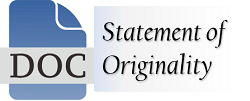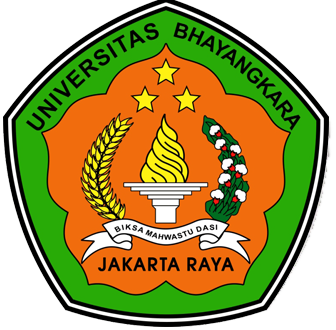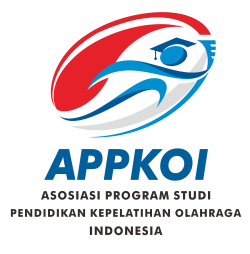Literature Review: Hiit Training on Physical Fitness, Vo2max and Social Status in Adults with Sedentary Lifestyle
DOI:
https://doi.org/10.31599/xe185820Keywords:
High Intensity Interval Training, Physical Fitness, VO2Max, Social Status, Sedentary LifestyleAbstract
In 2020, the World Health Organization (WHO) recommended engaging in 150-300 minutes of moderate-intensity physical activity per week, at 40-60% of the Maximal Pulse Rate (HRM), or 75-150 minutes of high-intensity physical activity at 60-85% HRM to maintain and enhance adult fitness. However, commonly cited obstacles to physical activity include time constraints, low motivation, and difficulties in adhering to guidelines. High-Intensity Interval Training (HIIT), requiring less time for exercise, has been shown to deliver equivalent or greater health benefits compared to WHO recommendations. This study aims to assess the impact of HIIT on physical fitness, VO2Max, and social status. Utilizing a literature review method, articles were sourced from Electronic Databases such as PubMed, ScienceDirect, and ProQuest. The results indicate that High-Intensity Interval Training (HIIT) can efficiently enhance physical fitness, significantly impact social status, and do so within a shorter time frame. This makes HIIT an appealing alternative for individuals facing challenges like time constraints, low motivation, or difficulties in adhering to traditional activity guidelines. With improvements observed in physical fitness and VO2Max, HIIT emerges as a compelling option for those seeking a time-efficient yet effective exercise method. Consequently, this research highlights that HIIT not only serves as an efficient strategy for achieving physical fitness and cardiorespiratory health but also contributes to enhancing social aspects. These findings offer valuable insights for designing more acceptable and sustainable physical activity programs within the community.
Downloads
References
ACSM. (2018). ACSM’s Guidelines for Exercise Testing and Prescription (D. Riebe (Ed.); 10th ed.). Lippincott Williams & Wilkins.
Ahmadizad, S., Avansar, A. S., Ebrahim, K., Avandi, M., & Ghasemikaram, M. (2015). The effects of short-term high- intensity interval training vs. moderate-intensity continuous training on plasma levels of nesfatin-1 and inflammatory markers. In Hormone Molecular Biology and Clinical Investigation. https://doi.org/10.1515/hmbci-2014- 0038
Alansare, A., Alford, K., Lee, S., Church, T., & Jung, H. C. (2018). The effects of high-intensity interval training vs. Moderate-intensity continuous training on heart rate variability in physically inactive adults. International Journal of Environmental Research and Public Health. 3(2). 234-246 https://doi.org/10.3390/ijerph1507150 8
Allen, N. G., Higham, S. M., Mendham, A. E., Kastelein, T. E., Larsen, P. S., & Duffield, R. (2017). The effect of high-intensity aerobic interval training on markers of systemic inflammation in sedentary populations. European Journal of Applied Physiology. 4(2).3613-3625.
https://doi.org/10.1007/s00421-017-3613-1
Arner, P., & Rydén, M. (2015). Fatty acids, obesity and insulin resistance. Obesity Facts. 4(1). 1-10. https://doi.org/10.1159/000381224
Astorino, T. A., Schubert, M. M., Palumbo, E., Stirling, D., Mcmillan, D. W., Cooper, C., Godinez, J., Martinez, D., & Gallant, R. (2013). Magnitude and time course of changes in maximal oxygen uptake in response to distinct regimens of chronic interval training in sedentary women. 4(1). 1-10. https://doi.org/10.1007/s00421-013- 2672-1
Badan Penelitian dan Pengembangan Kesehatan. (2013). Riset Kesehatan Dasar 2013. Riset Kesehatan Dasar 2013.
Batacan, R. B., Duncan, M. J., Dalbo, V. J., Tucker, P. S., & Fenning, A. S. (2017). Effects of high-intensity interval training on cardiometabolic health: A systematic review and meta-analysis of intervention studies. In British Journal of Sports Medicine. 3(3). 1- 10. https://doi.org/10.1136/bjsports- 2015-095841
Bompa, T. O., & Haff, G. G. (1999). Periodization: theory and methodology of training. In Human Kinetics.
Borrega-Mouquinho, Y., Sánchez-Gómez, J., Fuentes-García, J. P., Collado- Mateo, D., & Villafaina, S. (2021). Effects of High-Intensity Interval Training and Moderate-Intensity Training on Stress, Depression, Anxiety, and Resilience in Healthy Adults During Coronavirus Disease 2019 Confinement: A Randomized Controlled Trial. Frontiers in Psychology, 12(1) 1–11. https://doi.org/10.3389/fpsyg.2021.64 3069
Buchheit, M., & Laursen, P. B. (2013). High-intensity interval training, solutions to the programming puzzle: Part II: Anaerobic energy, neuromuscular load and practical applications. In Sports Medicine. 2(2).1-10. https://doi.org/10.1007/s40279-013- 0066-5
Cardozo, G. G., Oliveira, R. B., & Farinatti, P. T. V. (2015). Effects of high intensity interval versus moderate continuous training on markers of ventilatory and cardiac efficiency in coronary heart disease patients. Scientific World Journal. 3(1). 1-14. https://doi.org/10.1155/2015/192479
Clark, A., La, A. B. De, Jamie, R., & Todd, L. D. (2019). Effects of various interval training regimes on changes in maximal oxygen uptake, body
composition, and muscular strength in sedentary women with obesity. European Journal of Applied Physiology, 1(1). 1-14. https://doi.org/10.1007/s00421-019- 04077-x
Feng, R., Luo, C., Li, C., Du, S., Okekunle, A. P., Li, Y., Chen, Y., Zi, T., & Niu, Y. (2017). Free fatty acids profile among lean, overweight and obese non-alcoholic fatty liver disease patients: A case - Control study. Lipids in Health and Disease. 1(1). 1-14. https://doi.org/10.1186/s12944-017- 0551-1
Foo, K. P., & Lin Simon, M. (2018). Exercise 3. In Principles and Techniques in Combinatorics. 3(3). 1- 10. https://doi.org/10.1142/97898132388 55_0003
Foster, C., Farl, C. V., Guidotti, F., Harbin, M., Roberts, B., Schuette, J., Tuuri, A., Doberstein, S. T., & Porcari, J. P. (2015). The effects of high intensity interval training vs steady state training on aerobic and anaerobic capacity. Journal of Sports Science and Medicine. 3(2). 14-25. https://doi.org/10.1249/01.mss.00004 76771.63318.52
Guthold, R., Stevens, G. A., Riley, L. M., & Bull, F. C. (2020). Global trends ininsufficient physical activity among adolescents: a pooled analysis of 298 population-based surveys with 1·6 million participants. The Lancet Child and Adolescent Health. 3(1). 1-14. https://doi.org/10.1016/S2352- 4642(19)30323-2
Haff, G., & Travis, T. (2016). Essentials of Strength Training and Conditioning, 4th Edition. In G. Haff & T. Travis (Eds.), Medicine & Science in Sports & Exercise (4th ed., Vol. 48, Issue 10). Human Kinetics. https://doi.org/10.1249/MSS.0000000 000001081
Haga, M., Vrotsou, K., & Bredland, E. (2018). Visualizing Physical Activity Patterns among Community-Dwelling Older Adults : A Pilot Study. October. https://doi.org/10.3390/sports604013 5
Hardy, L. L., Mihrshahi, S., Gale, J., Drayton, B. A., Bauman, A., & Mitchell, J. (2017). 30-year trends in overweight, obesity and waist-to- height ratio by socioeconomic status in Australian children, 1985 to 2015. International Journal of Obesity. 3(3). 1-10. https://doi.org/10.1038/ijo.2016.204
Helgerud, J. A. N., Ydal, K. H. K., Wang, E., Karlsen, T., Simonsen, T., Helgesen, C., Hjorth, N., Bach, R., & Hoff, J. A. N. (2007). Aerobic High-
Intensity Intervals Improve VO2max More Than Moderate Training. MEDICINE & SCIENCE IN SPORTS & EXERCISE, 11, 665–671. https://doi.org/10.1249/mss.0b013e31 80304570
Heydari, M., Boutcher, Y. N., & Boutcher, S. H. (2012). The effects of high- intensity intermittent exercise training on cardiovascular response to mental and physical challenge. International Journal of Psychophysiology. 3(4). 1- 10. https://doi.org/10.1016/j.ijpsycho.201 2.11.013
Hruby, A., & Hu, F. B. (2015). The Epidemiology of Obesity: A Big Picture. In PharmacoEconomics. https://doi.org/10.1007/s40273-014- 0243-x
Huang, G., Shi, X., Davis-Brezette, J. A., & Osness, W. H. (2005). Resting heart rate changes after endurance training in older adults: A meta-analysis. Medicine and Science in Sports and Exercise, 37(8), 1381–1386. https://doi.org/10.1249/01.mss.00001 74899.35392.0c
Kerr, J., Anderson, C., & Lippman, S. M. (2017). Physical activity, sedentary behaviour, diet, and cancer: an update and emerging new evidence. In The Lancet Oncology. https://doi.org/10.1016/S1470-2045(17)30411-4
Khoury, M., Manlhiot, C., & McCrindle, B. W. (2013). Role of the waist/height ratio in the cardiometabolic risk assessment of children classified by body mass index. Journal of the American College of Cardiology. https://doi.org/10.1016/j.jacc.2013.01 .026
Kong, Z., Fan, X., Sun, S., Song, L., Shi, Q., & Nie, J. (2016). Comparison of high-intensity interval training and moderate-to-vigorous continuous training for cardiometabolic health and exercise enjoyment in obese young women: A randomized controlled trial. PLoS ONE. https://doi.org/10.1371/journal.pone.0 158589
Lanzi, S., Codecasa, F., Cornacchia, M., Maestrini, S., Capodaglio, P., Brunani, A., Fanari, P., Salvadori, A., & Malatesta, D. (2015). Short-term HIIT and Fatmax training increase aerobic and metabolic fitness in men with class II and III obesity. Obesity. https://doi.org/10.1002/oby.21206
Ma, E. B., Sahar, N. E., Jeong, M., & Huh, J. Y. (2019). Irisin Exerts Inhibitory Effect on Adipogenesis Through Regulation of Wnt Signaling. Frontiers in Physiology. https://doi.org/10.3389/fphys.2019.01085
Maffetone, P. B., & Laursen, P. B. (2016). Athletes: Fit but Unhealthy? Sports Medicine - Open. https://doi.org/10.1186/s40798-016- 0048-x
Mamikutty, N., Thent, Z. C., Sapri, S. R., Sahruddin, N. N., Mohd Yusof, M. R., & Haji Suhaimi, F. (2014). The establishment of metabolic syndrome model by induction of fructose drinking water in male Wistar rats. BioMed Research International. https://doi.org/10.1155/2014/263897
Mandriyarini, R. (2016). Sedentary Lifestyle Sebagai Faktor Risiko Kejadian Obesitas Pada Remaja Stunted Usia 14-18 Tahun Di Kota Semarang.
Marcinko, K., Sikkema, S. R., Samaan, M. C., Kemp, B. E., Fullerton, M. D., & Steinberg, G. R. (2015). High intensity interval training improves liver and adipose tissue insulin sensitivity. Molecular Metabolism. https://doi.org/10.1016/j.molmet.2015 .09.006
Medicine, A. C. of S. (2013). ACSM’s guidelines for exercise testing and prescription (W. R. Thompson, N. F. Gordon, & L. S. Pescatello (Eds.); 8th, illustr ed.). Lippincott Williams & Wilkins, 2010.Nurhayati, T. (2018). Jurnal Pendidikan Jasmani dan Olahraga. Pendidikan Jasmani Olahraga.
Nuzzo, J. L. (2019). The Case for Retiring Flexibility as a Major Component of Physical Fitness. Sports Medicine. https://doi.org/10.1007/s40279-019- 01248-w
Palaparthi, S. (2017). Role of Homeostasis in Human Physiology: A Review. Journal of Medical Physiology & Therapeutics.
Palar, C. M., Wongkar, D., & Ticoalu, S. H. R. (2015). Manfaat Latihan Olahraga Aerobik Terhadap Kebugaran Fisik Manusia. Jurnal E-Biomedik. https://doi.org/10.35790/ebm.3.1.201 5.7127
Ramos, J. S., Dalleck, L. C., Tjonna, A. E., Beetham, K. S., & Coombes, J. S. (2015). The Impact of High-Intensity Interval Training Versus Moderate- Intensity Continuous Training on Vascular Function: a Systematic Review and Meta-Analysis. In Sports Medicine. https://doi.org/10.1007/s40279-015- 0321-z
Reljic, D., Frenk, F., Herrmann, H. J., Neurath, M. F., & Zopf, Y. (2020). Low ‐ volume high ‐ intensity interval training improves cardiometabolic health , work ability and well ‐ being in severely obese individuals : arandomized ‐ controlled trial sub ‐ study. Journal of Translational Medicine, 2(3). 1–15. https://doi.org/10.1186/s12967-020- 02592-6
Reljic, D., Wittmann, F., & Fischer, J. E. (2018). Effects of low-volume high- intensity interval training in a community setting : a pilot study. European Journal of Applied Physiology, 5(3), 1-14. https://doi.org/10.1007/s00421-018- 3845-8
Riebe, D., Franklin, B. A., Thompson, P. D., Garber, C. E., Whitfield, G. P., Magal, M., & Pescatello, L. S. (2015). Updating ACSM’s recommendations for exercise preparticipation health screening. Medicine and Science in Sports and Exercise, 47(11), 2473– 2479. https://doi.org/10.1249/MSS.0000000 000000664
RISKESDAS. (2018). Riset Kesehatan Dasar 2018. Kementrian Kesehatan Republik Indonesia.
Roy, B. A. (2013). High-Intensity Interval Training. ACSM’s Health & Fitness Journal. https://doi.org/10.1249/fit.0b013e318 28cb21c
Salazar-Martínez, E., Santalla, A., Orellana, J. N., Strobl, J., Burtscher, M., & Menz, V. (2018). Influence ofhigh-intensity interval training on ventilatory efficiency in trained athletes. Respiratory Physiology and Neurobiology. 2(3). 15–30. https://doi.org/10.1016/j.resp.2018.01 .016
Sbardelotto. (2018). Improvement in muscular strength and aerobic capacities in elderly people occurs independently of physical training type or exercise model. CLINICS, 74(7), 1–9. https://doi.org/10.6061/clinics/2019/e 833
Setyo, B. (2012). Metodolgi Latihan Olahraga.
Sharashova, E., Wilsgaard, T., & Brenn, T. (2015). Non-communicable Disease Risk Factors Resting heart rate on the decline : the Tromsø Study 1986 – 2007. International Journal of Epidemiology, 44(3), 1007–1017. https://doi.org/10.1093/ije/dyv061
Sherwood, L. (2014). Fisiologi manusia dari sel ke sistem (Edisi ke-8). Alih Bahasa, Indonesia: Brahm U.
Stöggl, T. L., & Björklund, G. (2017). High intensity interval training leads to greater improvements in acute heart rate recovery and anaerobic power as high volume low intensity training. Frontiers in Physiology. https://doi.org/10.3389/fphys.2017.00562
Su, L. Q., Fu, J. M., Sun, S. L., Zhao, G. G., Cheng, W., Dou, C. C., & Quan, M. H. (2019). Effects of HIIT and MICT on cardiovascular risk factors in adults with overweight and/or obesity: A meta-analysis. PLoS ONE, 14(1), 1– 21. https://doi.org/10.1371/journal.pone.0 210644
Sumintarsih. (2006). Kebugaran Jasmani Untuk Lanjut Usia. Kebugaran Jasmani Untuk Lanjut Usia.
Susantiningsih, T. (2015). Obesitas dan Stres Oksidatif Obesity and Oxidative Stress. Jurnal Kesehatan Unila.
Swift, D. L., McGee, J. E., Earnest, C. P., Carlisle, E., Nygard, M., & Johannsen, N. M. (2018). The Effects of Exercise and Physical Activity on Weight Loss and Maintenance. In Progress in Cardiovascular Diseases. https://doi.org/10.1016/j.pcad.2018.0 7.014
Syamsudin, F. (2021). HIIT for Improving Maximal Aerobic Capacity in Adults Sedentary Lifestyle. Halaman Olahraga Nusantara (Jurnal Ilmu Keolahragaan), 4(1), 1. https://doi.org/10.31851/hon.v4i1.513 9
Thompson, W. R. (2019). Worldwide Survey of Fitness Trends for 2020. In ACSM’s Health and Fitness Journal. https://doi.org/10.1249/FIT.00000000 00000526
Viana, R. B., Naves, J. P. A., Coswig, V. S., De Lira, C. A. B., Steele, J., Fisher, J. P., & Gentil, P. (2019). Is interval training the magic bullet for fat loss? A systematic review and meta- analysis comparing moderate- intensity continuous training with high-intensity interval training (HIIT). In British Journal of Sports Medicine. https://doi.org/10.1136/bjsports-2018- 099928
Vigriawan, G. E., Putri, E. A. C., Rejeki, P. S., Qurnianingsih, E., Kinanti, R. G., Mohamed, M. N. A., & Herawati, L.
Wewege, M., van den Berg, R., Ward, R. E., & Keech, A. (2017). The effects of high-intensity interval training vs. moderate-intensity continuous training on body composition in overweight and obese adults: a systematic review and meta-analysis. In Obesity Reviews. https://doi.org/10.1111/obr.12532
Zaleski, A. L., Taylor, B. A., Panza, G. A., Wu, Y., Pescatello, L. S., Thompson, P. D., & Fernandez, A. B. (2016). The FITT-V Principle of the ExR x Professional Committee/Organization ACSM/AHA 7,31 CDC 9 NIH 45 CSEP 46 BSG 47 WHO 48. 2, 98–104. (2022). High-intensity training improves performance without protein (CRP) level alteration in overweight sedentary women. Journal of Physical Education and Sport, 22(2), 442–447. https://doi.org/10.7752/jpes.2022.020 55
Weston, K. S., Wisløff, U., & Coombes, J. S. (2014). High-intensity interval training in patients with lifestyle- induced cardiometabolic disease: A systematic review and meta-analysis. In British Journal of Sports Medicine. https://doi.org/10.1136/bjsports-2013- 092576
Wewege, M., van den Berg, R., Ward, R. E., & Keech, A. (2017). The effects of high-intensity interval training vs. moderate-intensity continuous training on body composition in overweight and obese adults: a systematic review and meta-analysis. In Obesity Reviews. https://doi.org/10.1111/obr.12532
Zaleski, A. L., Taylor, B. A., Panza, G. A., Wu, Y., Pescatello, L. S., Thompson, P. D., & Fernandez, A. B. (2016). The FITT-V Principle of the ExR x Professional Committee/Organization ACSM/AHA 7,31 CDC 9 NIH 45 CSEP 46 BSG 47 WHO 48. 2, 98–104.
Downloads
Published
Issue
Section
License
Copyright (c) 2023 Yuastrian Teja Kusuma, Setyo Harmono, Atrup

This work is licensed under a Creative Commons Attribution 4.0 International License.






.png)







